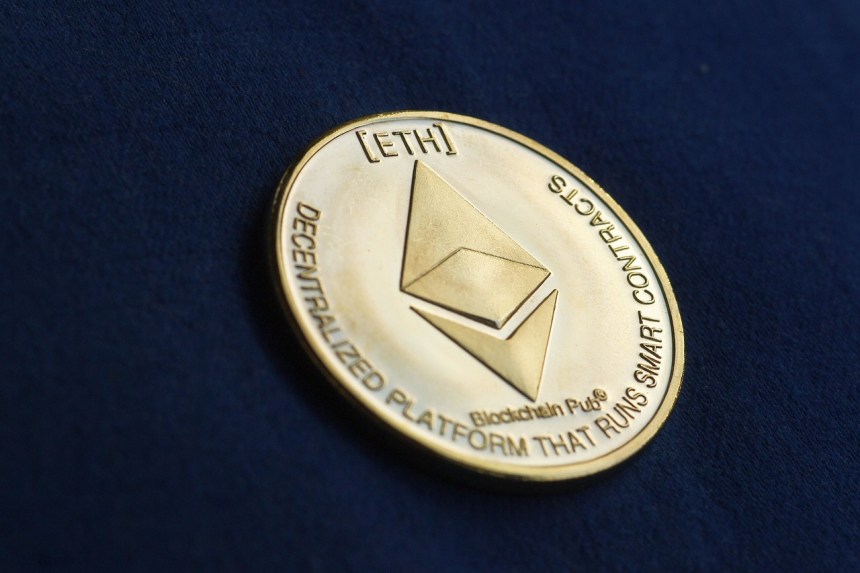The clock is ticking for Ethereum’s survival. At least, this is according to Ethereum co-founder Vitalik Buterin, who has stated that the next five years will be the key determining factor if the ecosystem can successfully take on the burdens and benefits of mainstream adoption. In the recent interview, he had a number of ideas concerning the why portion of this challenge. With growing trends like stablecoins and non-financial use cases, there certainly seems to be a looming wave of demand for not just Web3 services, but for Etherereum’s proven track record of serving a large, robust ecosystem.
This is wonderful news, as if Ethereum cannot successfully achieve mass adoption in the next five years, it risks devolving back into a niche market or irrelevance altogether. Buterin did not expressly state this in the interview, but technology has a tendency to either continuously evolve or degrade, but maintaining stasis is generally impossible. With more Layer 2’s building on Ethereum, the ability to find increasing use cases that could interest the general public is present. The other advantage Ethereum has is the flywheel-like momentum inherent in positively reinforced systems: the more use cases present in Ethereum, the more new use cases can evolve due to the interaction opportunities between them. However, all of this is only good news if Ethereum can handle rapid growth of the 1,000x, 10,000x, or 100,000x increase in users. Although Ethereum is a top ecosystem in the Web3 industry, it is far from mainstream. In order to handle the goal of supporting mass adoption in five years, it needs to become essentially infinitely scalable. As of today, this is far from the case. That said, new technologies like ZK and stateless architecture are being explored to solve key scalability problems, with platforms such as INTMAX already rolling out their solutions in hopes of solving this decade-long challenge. Could we be on the cusp of true Ethereum scalability, enough to handle the next five years of mass adoption?
Ethereum Scalability Woes
Since the platform’s go-live in 2015, Ethereum has been (necessarily) obsessed with scalability. Because of its ability to provide a service and a platform for so many interested developers and users, the chain has suffered from major congestion. High activity has created slow performance and sky-high prices, which is a terrible combination for an ecosystem working to attract more users. In 2017, Buterin introduced the concept of Plasma, which showed tremendous promise in taking the bulk of processing off the mainnet and allowing fast transactions at low costs. This, however, ran into major issues as soon as the complexity of a use case began to rise. A simple format, such as the Plasma Cash application, showed that the Plasma framework was possible. By using Merkle trees, users could track ownership of assets (especially non-fungible assets), and operators created blocks with this information available to all participants. However, the operator could also misbehave by creating unavailable or invalid blocks. Users were on the hook to spot if their assets had been falsely represented in a new block, necessitating a seven day period where users could challenge the state. This time delay, not to mention the administrative nightmare burden for users, quickly soured Plasma’s usability, and it faded from being the hope of Ethereum scalability. Instead, the emergence of rollup technologies, especially zk-rollups and optimistic rollups, have been able to take much of the computational burden off the mainnet, removing congestion. Overall, this technique has been successful, but it has not solved Ethereum’s scalability issues completely. The recent Dencun upgrade, which introduces EIP-4844 (also known as “proto-danksharding”), helps this process even further by reducing transaction fees for L2s. It builds off the Shapella upgrade by introducing data blobs, and improves the consensus and execution layers of the ecosystem. It’s a strong step toward scalability, but it doesn’t have what it takes to handle mass adoption yet.
At the center of the issue is storage. Ethereum has major storage limitations, but it is not completely evident how platforms can make full use of Ethereum’s secure consensus while keeping the bulky computations off the mainnet. However, in November 2023 Buterin decided to circle back to his original Plasma ideas, discussing how these could be enhanced with new technologies such as Zero Knowledge processes. To do so would bring privacy into the Plasma process, but would also help the verification of assets and eliminate the seven day verification period (along with the burden on users to keep tabs on the operator behavior). However, the full scalability issue remains, but could be solved by implementing a stateless architecture.
Stateless Architecture: The Missing Piece?
Stateless architecture is impossible. At least, according to the expert group of a16z researchers. And they seem to be correct. However, INTMAX’s Plasma Next has developed a “pseudo solution” that actually captures the benefits intended by stateless architecture, even if it isn’t 100% stateless. The key benefit is creating a structure that can scale at a fixed cost per block, and is independent of the number of users.
The core of this idea is shifting the data storage responsibility to each user instead of the nodes/validators/operators. While it may sound risky to shift burdens back to users instead of the system (like the Plasma seven day challenge period), in this case the process can be automated by the platform, and protected through encryption protocols like ZK. By using ZK, the data not only stays encrypted, it can utilize multi-party computation to actually interact with other users, ensuring all use cases can still be executed. With each user having the minor requirement of storing their own data, this also creates major custodial security benefits, and using ZK ensures the data stays safe. The pseudo-stateless architecture is then able to scale up infinitely, without any additional burdens related to the number of users in the system. With the costs so incredibly low, the platform created the ability to make micro- and even nano-payments as low as $0.000000001 in DAI.
What Lies Ahead?
So, will ZK-infused, stateless architecture finally bring about Buterin’s “Neo-Plasma”, and along with it an Ethereum that is fully able to support mass adoption? We will see. But thankfully, with Plasma Next launching we won’t have to wait long to see if it can live up to the scalability hype, balancing the ability to process any amount of data off the mainnet while fully utilizing Ethereum’s strong security. Thankfully, the evolution of technology continues, and these great ideas like Plasma that were sadly ahead of their time, may finally have their moment in the spotlight—and just in time.
Image by Dean Crosby from Pixabay





















